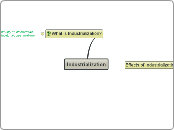jonka Nadine Dunstone 4 vuotta sitten
720
Cyberbullying: 1. Social aggression towards a victim using a digital device 2. Intent to cause harm to the victim 3. Involves a real or perceived imbalance of power between the victim and perpetrator (Redmond et al., 2018)
Cyberbullying involves social aggression via digital devices with the intent to harm, often characterized by a real or perceived power imbalance between the victim and perpetrator. Various forms include impersonation, exclusion, denigration, harassment, and flaming.









